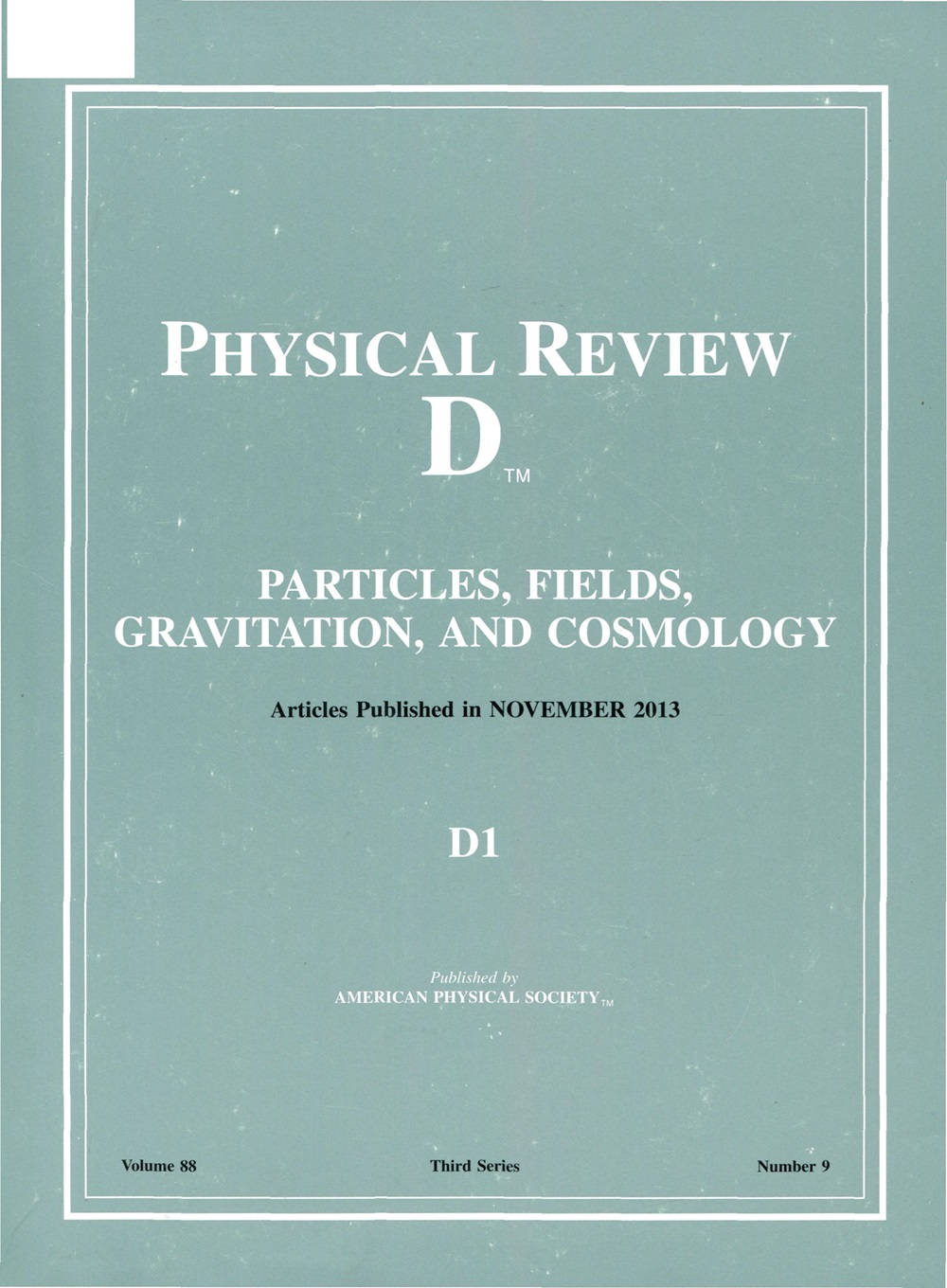Phases of 2D massless QCD with qubit regularization
IF 5
2区 物理与天体物理
Q1 Physics and Astronomy
引用次数: 0
Abstract
We investigate the possibility of reproducing the continuum physics of 2D SU(N) gauge theory coupled to a single flavor of massless Dirac fermion using qubit regularization. The continuum theory is described by具有量子位正则化的二维无质量QCD相位
我们研究了利用量子位正则化再现二维SU(N)规范理论耦合到单一无质量狄拉克费米子的连续介质物理的可能性。连续统理论是用紫外(UV)中的N个自由费米子和红外(IR)中的共集Wess-Zumino-Witten (WZW)模型来描述的。在这项工作中,我们首先探讨了如何使用有限维链接Hilbert空间和广义Hubbard耦合的Kogut-Susskind (KS)哈密顿量来再现这些特征。我们通过分析连续统理论的重整化群(RG)流程图并确定该理论的重要阶段来做到这一点。通过强耦合展开,我们发现我们的晶格模型具有一个间隙二聚体相和一个自旋链相。此外,对于N=2,使用张量网络方法,我们表明在这两个相之间存在二阶相变,我们将其确定为连接IR和UV不动点的连续统理论的临界面。在本文中,我们将过渡阶段的关键理论确定为预期的SU(2)1 WZW模型。最后,我们认为修改我们的模型可能允许研究自由费米子的紫外物理。2025年由美国物理学会出版
本文章由计算机程序翻译,如有差异,请以英文原文为准。
求助全文
约1分钟内获得全文
求助全文
来源期刊

Physical Review D
物理-天文与天体物理
CiteScore
9.20
自引率
36.00%
发文量
0
审稿时长
2 months
期刊介绍:
Physical Review D (PRD) is a leading journal in elementary particle physics, field theory, gravitation, and cosmology and is one of the top-cited journals in high-energy physics.
PRD covers experimental and theoretical results in all aspects of particle physics, field theory, gravitation and cosmology, including:
Particle physics experiments,
Electroweak interactions,
Strong interactions,
Lattice field theories, lattice QCD,
Beyond the standard model physics,
Phenomenological aspects of field theory, general methods,
Gravity, cosmology, cosmic rays,
Astrophysics and astroparticle physics,
General relativity,
Formal aspects of field theory, field theory in curved space,
String theory, quantum gravity, gauge/gravity duality.
 求助内容:
求助内容: 应助结果提醒方式:
应助结果提醒方式:


